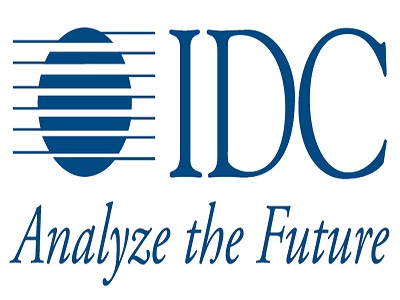E-Business
Worldwide Large Format Printer Market Returned to Growth in 3Q2013

The worldwide large format printer market grew 6.2% year over year with 77.7 thousand units shipped in the third quarter of 2013 (3Q13), according to the International Data Corporation (IDC) Worldwide Quarterly Large Format Printer Tracker.
This quarter’s market growth marks the first time since the first quarter of 2011 where both units and shipment value achieved year-over-year gains.
IDC quantified the total 3Q13 market value at $802.8 million, an increase of 6.2% year over year.
The overall growth was fueled by solid demand from the two largest geographic markets, the United States and Asia/Pacific (excluding Japan)(APeJ).
The U.S. had year-over-year growth of 16.5% in units and 8.4% in shipment value while APeJ enjoyed a 20.9% gain in units and 8.4% in shipment value.
“Epson was one of the main growth engines in the APeJ market. The password encryption on Epson print heads benefited Epson itself, as well as Roland, Mimaki and Mutoh who OEM from Epson.
The encryption was established in December 2012 and helped to prevent other Chinese brands from using Epson print heads to develop their own machines,” said Phuong Hang, program, director, Worldwide Large Format Printer Tracker.
The technology highlights show that the technical application segment grew 5.7% to 45.9 thousand units shipped, and accounted for 59.1% share of the total LFP market in the third quarter, unchanged from a year ago.
Seven out of eight regional markets showed year-over-year unit growth in this segment with the Middle East & Africa (MEA) leading the pack at 23.8%, followed by the U.S. at 15.4% and Japan at 12.7%.
The graphics application segment also showed a year-over-year gain in 3Q13, increasing 6.9% to 31.8 thousand units and accounting for 40.9% share of the overall market.
The two largest regional markets, APeJ and the U.S., were among the four regional markets that posted year-over-year growth, 19.8% and 18.0%, respectively. The other two regions that expanded year over year were Japan and MEA.
Vendor wise, HP continued as the number one ranked vendor in 3Q13 with worldwide large format printer market share of 39.1% and 30.5 thousand units shipped, which is a -1.4% decline year over year.
The vendor posted year-over-year growth in four regional markets, including APeJ and the U.S., with 15.0% and 13.4%, respectively.
Epson climbed up one spot from last quarter to become the number two ranked vendor. Epson grew 13.5% year over year to 16.6 thousand units shipped, resulting in 21.4% share.
This performance was driven by double-digit year-over-year growth in the U.S. (51.4%), APeJ (34.2%), Japan (22.4%), and MEA (16.8%).
Canon moved down one spot from last quarter to the number three position worldwide. The vendor increased 12.4% year over year to 16.4 thousand units and 21.1% share. Canon had a year-over-year increase in all regions except for Western Europe.
The top three regions in terms of year-over-year growth were Central & Eastern Europe (CEE) at 46.7%, APeJ at 35.5%, and Canada at 17.3%.
Roland strengthened its position as the number four vendor in the worldwide large format printer market with 20.9% year-over-year growth and 2.7 thousand units shipped.
Other than Europe, the vendor posted year-over-year gains in all other regions with MEA being the leader in terms of year-over-year growth at 50.0%, followed by APeJ at 45.7% and Latin America at 45.1%.
Ricoh continued as the number five vendor for the third consecutive quarter with over 2 thousand units shipped and 2.6% share.
The vendor’s shipments increased 22.1% year over year, the best year-over-year performance among the top 5, and posted positive shipment growth in all regions except for Latin America.
All of Ricoh’s top three regional markets expanded year over year including Japan growing at 3.8%, the U.S. at 45.1%, and APeJ at 20.4%.
E-Business
BPP Partners NDPC to Strengthen Data Protection

Dr Adebowale Adedokun, director-general, Bureau of Public Procurement (BPP), has reaffirmed the bureau’s commitment to data protection in Nigeria.

He disclosed this in a statement at the weekend by Zira Nagga, head of Public Relations, BPP, following a courtesy visit by a delegation from the National Data Protection Commission (NDPC).
Adedokun stressed that data protection is vital to Nigeria’s economy and development, particularly in areas such as demography, health, education, and other key sectors.
He emphasised that no country should leave its data unprotected, as it plays a crucial role in future planning and national development.
“Data governs the world. It is essential to technological progress and must be protected for a country or business to be taken seriously,” he said.
Adedokun described the visit, aimed at fostering partnership on data policy implementation and protection, as timely and aligned with national goals.
He said the BPP would collaborate closely with the NDPC to boost data development, capacity building, and enhance the procurement system.
“The BPP will support compliance as part of the ‘Nigeria First’ Policy, although it is not a core procurement eligibility requirement,” he explained.
He suggested a hybrid training model to help build strong capacity in data protection, privacy awareness, and policy understanding.
According to him, a dynamic training approach will reduce logistics costs and improve public confidence in data safety and privacy.
Dr Vincent Olatunji, CEO, and national commissioner, NDPC, praised Adedokun and the BPP for supporting data protection initiatives.
He said the partnership supports President Bola Tinubu’s vision and will strengthen data privacy across Ministries, Departments, and Agencies (MDAs).
“The collaboration will create awareness and train BPP staff to ensure a firm grasp of data protection principles and policies,” he stated.
Olatunji said the NDPC would establish a working group to finalise a Memorandum of Understanding beneficial to both institutions.
He added that President Tinubu signed the NDPC into law on 12 June 2023 to uphold citizens’ rights and protect national and business data.
Olatunji also noted that strict legal measures were in place to enforce data protection and ensure full compliance nationwide.
Both agencies agreed to form a team to sign the MoU and focus on capacity building and data management in procurement and beyond.
E-Business
FG Mulls Fibre Optic Layout to Bridge Internet Gaps

President Bola Tinubu said that his administration has initiated a project to install fibre optic cables across the country, aimed at enhancing the socio-economic development of Nigeria.

His plans were contained in a speech he delivered at a joint session of the National Assembly in commemoration of Democracy Day on Thursday, June 12.
He said the fibre optic layout is part of other projects being embarked on.
“In addition, we have embarked on an ambitious project to lay fibre optic cables across the nation, a transformative step toward bridging the digital divide and fostering greater connectivity.
“This initiative promises not only to enhance the speed and reliability of internet access but also to revolutionise how businesses operate, how students learn, and how communities stay connected,” Tinubu stated.
He maintained that by extending this critical infrastructure, his government is empowering entrepreneurs, enabling digital education, and providing the tools for our youth to compete in a globalised world.
In a most recent report on Internet connectivity, The ICIR pointed out how Nigeria has faced setbacks in its deployment of fibre optic cables and needs a transformation.
The challenges revolve around vandalism, inadequate coordination between road construction and telecom infrastructure, and varying right-of-way (RoW) charges across states.
Among industry experts, these issues impact network outages, increase repair costs, and hinder broadband expansion efforts.
It has also further threatened the digital economy, leading to slower Internet speeds, dropped calls, and unreliable connectivity among others.
E-Business
African Startups Raised $345m in Funding in May

African startups raised more than $345 million across 65 deals in May, more than double the amount raised in the same period of last year, according to a report by Briter, a research and business intelligence firm.

The report disclosed that both the number of deals and participating companies declined, confirming a growing trend of fewer companies raising funds in larger sizes.
It said fintech attracted the highest share of funding in May, accounting for 34 percent of the total, while cleantech followed closely, driven by a debt deal from Sun King. The company raised $80 million (in local currency) to expand clean energy access in Nigeria.
“Equity remains the primary instrument in terms of total value. There’s no doubt about it; in fact, equity deals with disclosed amounts captured more than half of the total funding volume in May.
“However, debt financing is increasingly proving its weight. Although it accounted for only 8 percent of all deals, it represented 32 percent of the total funding, highlighting the typically larger size of debt transactions. With the rise of specialised vehicles targeting early-stage businesses, debt is becoming an increasingly important part of Africa’s innovation funding landscape,” it said.
Briter’s report added that grants continued to play a vital role in early-stage support, especially in the education technology (EdTech) sector. The Mastercard Foundation led the pack in grant activity, funding a new cohort of EdTech innovators in Nigeria and Kenya. Each selected startup is set to receive $100,000 in grant funding, in addition to mentorship and business development support.
Multilaterals also made a strong showing in May, it said. The Multilateral Investment Guarantee Agency (MIGA), a World Bank Group member, issued a $179.6 million guarantee to CleanTech firm KOKO Networks. The support will help scale its clean energy solutions across Kenya.
“This deal not only demonstrates growing international confidence in African climate ventures but also signals a promising pathway for other asset-intensive startups in clean cooking, agriculture, and renewable energy,” the report said.
From a geographic perspective, Egypt emerged as the continent’s fundraising powerhouse for the month, contributing 51 percent of all funding raised. The country recorded 12 deals across equity, debt, and bond instruments. Notably, FinTech platform MNT-Halan raised $50 million through a bond issuance, further illustrating the diversification of capital-raising mechanisms in the region.
Outside Egypt, funding was distributed across Africa’s three other key markets, which are Egypt, Nigeria, and Kenya, with limited activity recorded in countries such as Ghana, Tunisia, Morocco, and Uganda, each registering between one and three deals.
In terms of exits, the African tech landscape continues to mature. Three companies—Baobab+, Qardy, and Shopa—were acquired in May, bringing the total number of exits this year to 22. This already surpasses last year’s count for the same period. Qardy was acquired by Catalyst Partners Middle East (CPME) in a disclosed deal valued at $23 million, the report added.

 E-Financial2 days ago
E-Financial2 days agoSterling Bank Pledges ₦2bn to Fully Fund University Scholarships

 E-Financial11 hours ago
E-Financial11 hours agoFidelity Bank ED, Kevin Ugwuoke takes over as President of Risk Managers Association

 Telecom2 days ago
Telecom2 days agoMTN Nigeria Unveils CPaaS Platform to Transform Business Communication

 General News11 hours ago
General News11 hours agoAirtel Concludes Nationwide Environment Week with Market Clean-Up by Employees

 News2 days ago
News2 days agoChina Expands Zero-Tariff Trade for Nigeria, 52 Other African Nations

 General News11 hours ago
General News11 hours agoCourt Orders Lawyer to Produce “Bail-Jumping” Client in MTN Cyber Fraud Case

 Broadcasting11 hours ago
Broadcasting11 hours agoMultichoice Nigeria Faces Revenue Decline Amid Economic Challenges

 E-Financial11 hours ago
E-Financial11 hours agoCBN Suspends Dividend, Bonus Payments for Banks under Forbearance


























